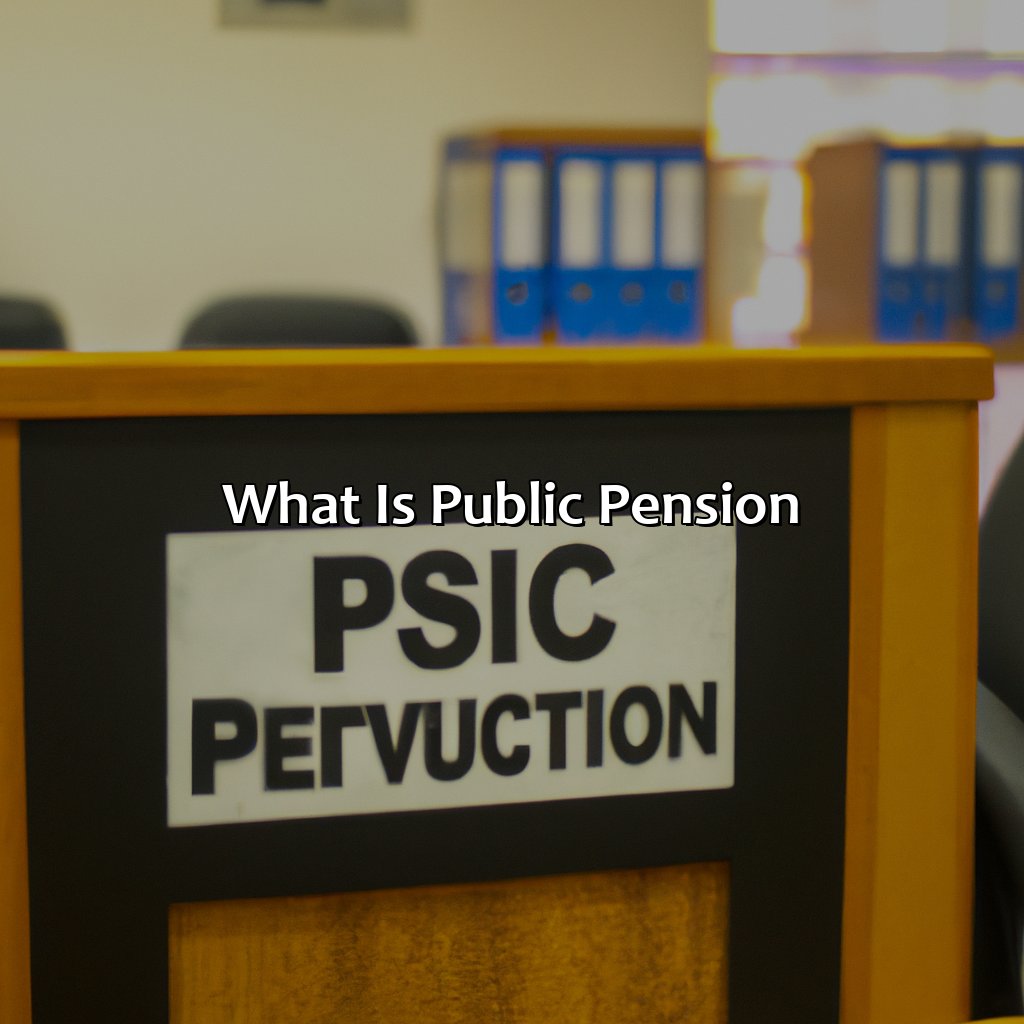What Is Public Pension?
Key Takeaway:
- Public pension refers to a retirement plan funded by the government for eligible individuals, typically government employees or retired individuals.
- There are various types of public pensions, including defined benefit plans and defined contribution plans. Each has its own funding system and payout structure.
- The importance of public pension in society is significant as it enables financial stability for retirees, promotes social welfare, and reduces poverty among the elderly. However, it faces sustainability issues due to demographic changes and increased costs.
Are you wondering about the meaning of public pension and how it can benefit you? You re not alone. This article will provide insight into the definition of public pension, the benefits of a public pension plan, and tips for taking advantage of this important retirement option.
What is Public Pension?
Public pension can be better understood by becoming familiar with its various aspects. The following are the two sub-sections that provide a thorough analysis:
- Defining Public Pension explains what public pension is.
- Types of Public Pension presents the different types of public pensions available.
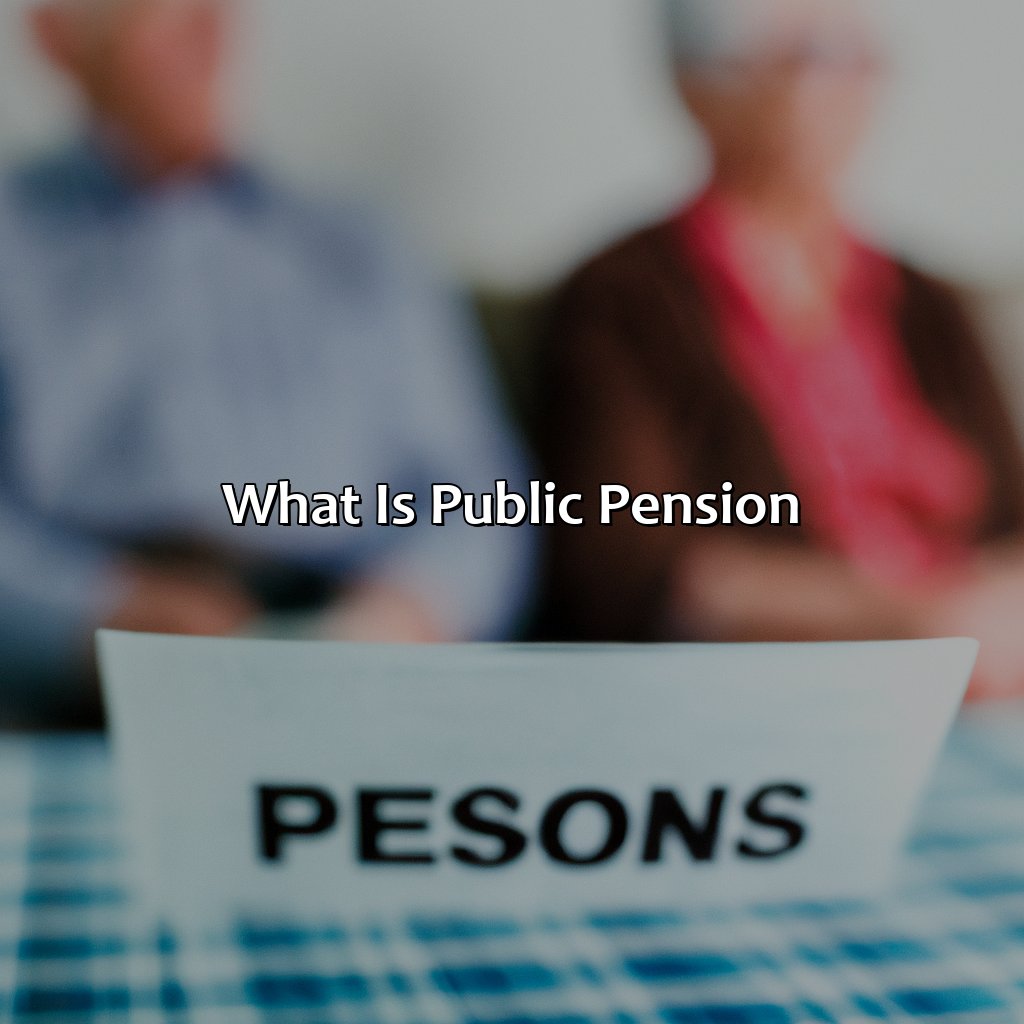
Image credits: retiregenz.com by David Arnold
Defining Public Pension
Public pension is a retirement plan offered by the government to its employees who have dedicated themselves to serving the public. It is a defined benefit plan that guarantees a predetermined amount of retirement benefits, and it’s funded by contributions from both employers and employees. The primary objective of this program is to provide financial security for those who have served the public but don’t have the means to support themselves after retiring.
In essence, public pensions are an integral part of social welfare programs that are meant to aid public workers during their retirement. This type of pension is not restricted to any specific sector or industry; it covers anyone who works in the public sector. Hence, professions such as police officers, firefighters, teachers, and civil servants all qualify for this type of retirement plan. Public pensions can vary depending on a range of factors like salary at retirement, age of retirement and length of service.
Interestingly, Public Pensions were first introduced back in 1889 when Germany initiated its social security system called Bismarck’s Welfare State. It was designed as a welfare provision alongside several other benefits packages like health insurance and accident insurance among others. Today most countries around the world offer some form of Public Pension as part of their Social Security System.
Public pensions come in all shapes and sizes – like a bag of Skittles, but instead of fruity flavours, you get various levels of financial security in your retirement.
Types of Public Pension
Government-Provided Pension schemes are a crucial component of public welfare programs. They ensure that senior citizens, retired employees, and people with disabilities can lead their lives without financial distress. Here are some types of Public Pension in detail:
| Type | Description |
|---|---|
| Defined Benefit Plan | A type of pension plan where employers promise to give a fixed benefit after retirement based on various factors like salary history, job tenure, and age. |
| Defined Contribution Plan | Employers and employees contribute to this form of pension which is then invested in mutual funds with varying risks and returns. Upon retirement, the account balance becomes available for withdrawal. |
| Social Security System | A mandatory government-administered scheme funded through taxes charged on earnings to provide benefits at the time of retirement or disability. |
Besides these three, there are other forms of public pensions like Cash Balance Plan and Hybrid Pension Plan. These plans differ in their contribution terms and benefits provided.
With rising life expectancy rates and uncertain healthcare costs, it is paramount to understand your eligibility and requirements under any public pension scheme. Ensure proper fund management for a comfortable future!
Learn more about EE pension and its benefits.
Public pension has been around longer than the idea of retirement itself – turns out even Ancient Rome had a pension plan for its soldiers, proving that pensions are the original thank you for your service package.
History of Public Pension
Grasp the history of public pension! Dive into its origin and growth. Uncover how public pension began and how it has altered over time. Furthermore, understand its importance and vital part in current society.
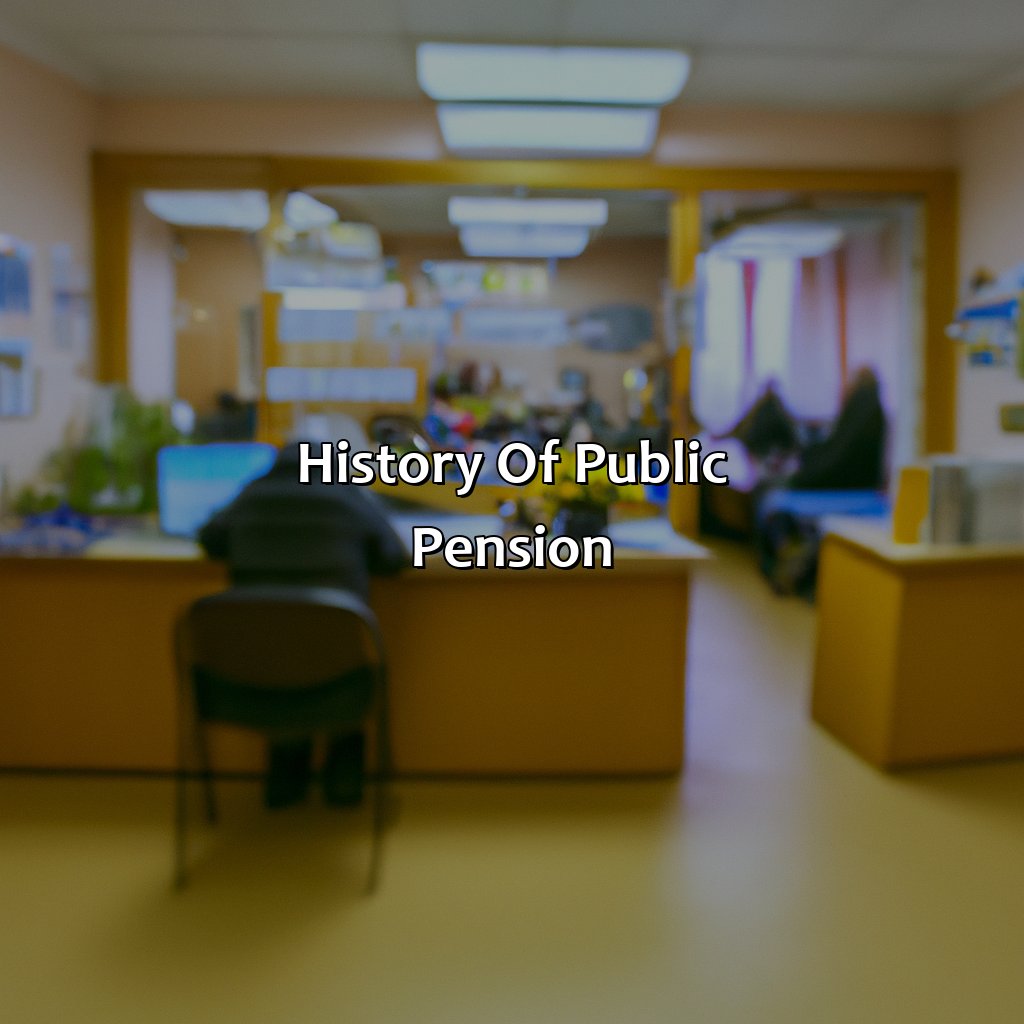
Image credits: retiregenz.com by James Woodhock
Origin and Development of Public Pension
The introduction and expansion of the idea of a public pension system is a critical part of the evolution of social welfare. This welfare system aimed to provide financial assistance and security for the elderly and disabled individuals who were unable to support themselves financially. The development of this idea dates back centuries, with the first recorded instance being in ancient Rome. However, it wasn’t until the 19th century that modern public pensions came into existence.
Since then, countries around the world have implemented numerous systems, each with its unique set of eligibility requirements, benefits, and funding sources. In some nations, these programs are mandatory, while in others, they may be voluntary or means-tested. If you’re curious about the different types of pension systems and the role pension funds play in the economy, check out this article on what percentage of the stock market is owned by pension funds.
An interesting aspect of public pension history is that it has often been shaped by economic turbulence or political movements. For example, during World War II in the United States, there was a significant demand for workers. As a result, many older employees were forced out of work to create job vacancies for younger people. This led to increased attention on retirement savings plans and eventually paved the way for social security’s implementation.
Public pension programs have gone through many transformations over time as societies continue to adapt and respond to demographic changes and societal needs. While current systems face challenges such as sustainability concerns due to increasing life expectancies and aging populations in some regions globally, understanding their history can help shape future decisions about this crucial aspect of social welfare policy.
Without public pension, our old age would be like a low-budget horror movie – no happy ending, just a few screams and a lot of regret.
Importance of Public Pension in Society
Public Pension is an indispensable social welfare program that can be extremely beneficial for older adults. This program provides financial assistance in old age or retirement to those who contributed during their employment years. It ensures a comfortable and dignified life for the retired population. Public pension greatly reduces poverty, increases personal savings, and enhances economic stability. Its importance lies in ensuring financial security in late stages of life, which leads to improved overall wellbeing of individuals and society.
Without public pension plan, many people would struggle to meet their basic needs and maintain a decent standard of living in old age. The program serves as a safety net for retirees who may not have saved enough money during their working years or are unable to work due to poor health conditions. Moreover, it promotes healthy aging by providing access to healthcare services and reducing stress caused by financial insecurity. With declining birth rates and aging populations, public pensions are crucial in sustaining economic growth.
Interestingly, public pension programs have a long history dating back to ancient times when Chinese Emperor Yu offered judges lifetime payment after retirement around 2,000 B.C. Although the modern concept started in Germany during the 1880s under Chancellor Otto von Bismarck as part of his welfare state strategy, it is important to understand how to find your pension information in modern times. Public pension programs have now become a widespread social policy around the world with various models catering to different societies’ needs.
Public pension: where your money goes to retire and live off the government, instead of funding your own tropical island and mai tai addiction.
How Public Pension Works
To grasp public pension, eligibility and prerequisites are substantial. You must be aware of the qualifications you have to meet to be qualified for public pension benefits. Moreover, you need to understand how it is funded and kept up.
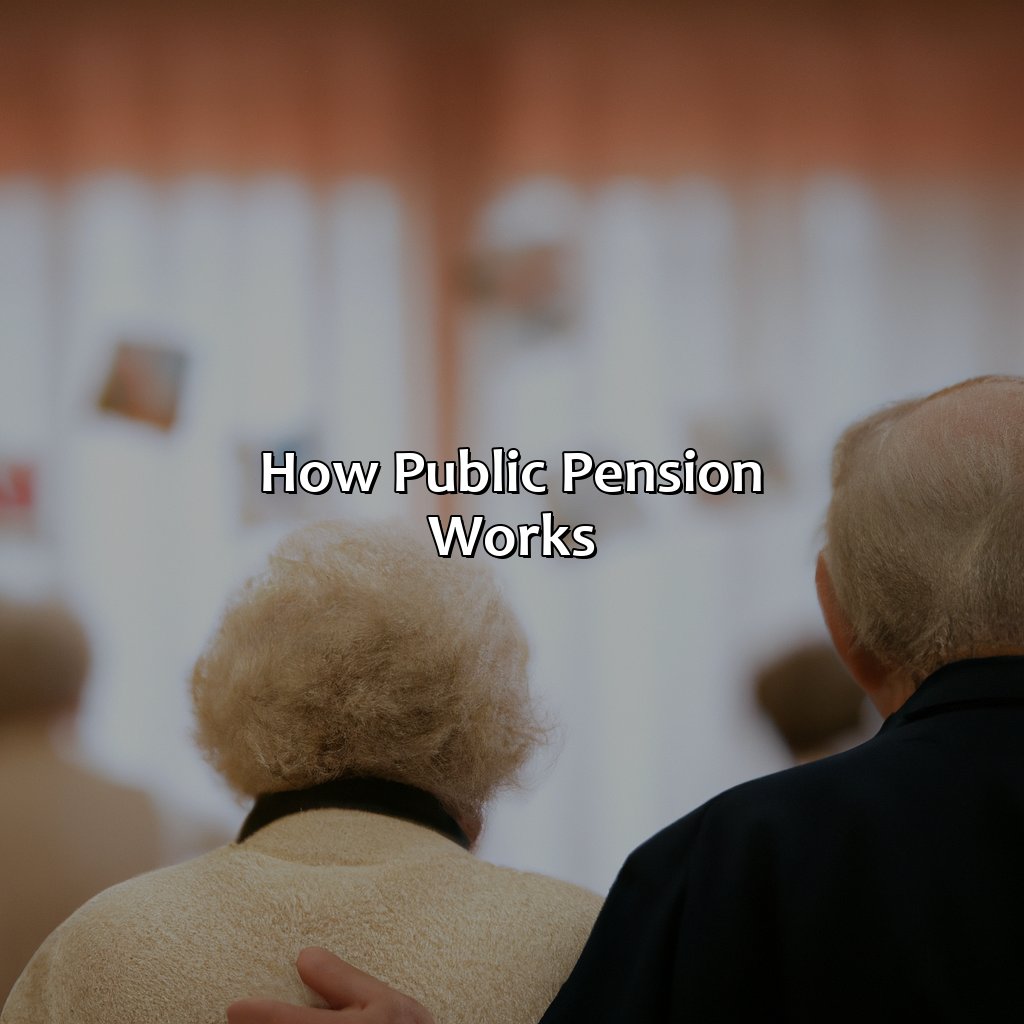
Image credits: retiregenz.com by Harry Arnold
Eligibility and Requirements
To qualify for the public pension plan, one needs to meet certain qualifying criteria. The eligibility criteria vary depending on the country and state, but there are common requirements such as age, work experience, and contribution history.
While eligibility age requirements vary across countries and states, most require individuals to have worked for a minimum number of years to be eligible for the pension. In some cases, individuals may also need to meet specific service-based or income-based conditions to qualify.
For instance, in the United States, an individual must have worked in Social Security-covered employment for at least ten years and earned a minimum of 40 Social Security credits to be eligible for retirement benefits. Additionally, some states offer a defined benefit plan that requires employees to work a certain number of years before becoming vested.
Other unique qualification factors could include residency status or disability status in some countries and states. Understanding these specifications can help ensure maximum pension benefits when one becomes eligible.
Failing to meet eligibility standards could result in reduced or no pension payments during retirement. Therefore it is essential always to comply with stated qualifications criteria.
If you’re wondering what exactly is an “er pension”, you can learn more about it on this website.
Public pension: where the government takes your money and promises to give it back to you when you’re old and grey, but only if they haven’t spent it all on avocado toast and artisanal coffee first.
Funding of Public Pension
The financing of public pension schemes is a critical aspect of ensuring long-term financial stability. The funding process involves contributions from employees and employers, as well as investment income from the plan’s assets. The level of funding required to meet pension obligations depends on factors such as the plan’s design, funding policy, and investment performance.
Effective management of contributions and returns is essential to safeguarding pension benefits. Pension funds can either be defined benefit or defined contribution plans, each with its own specific funding requirements. In defined benefit plans, the employer bears most of the investment risks while in defined contribution plans, employees bear most of the risk. If you’re wondering how many pension plans are there in the US, there are various plans available for people to choose from based on their needs.
If you are wondering which of the following IRAs provides a pension for employees, then you may want to consider a traditional IRA. It allows you to make pre-tax contributions which reduce your taxable income, and in some cases, may also qualify you for a tax credit.
To ensure sustainable funding for public pensions, governments must also address demographic change, including aging populations and shrinking workforces. This requires changes to fund design and contribution rates over time. Learn more about pension debt and its impact on public pensions.
In recent history, many countries have faced challenges associated with unfunded pension liabilities due to inadequate planning for demographic change or government debt crises. These experiences led to significant reforms in some countries to prioritize transparency and sustainability in the pension system.
What is S pension and how does it differ from other types of public pension schemes? Understanding the differences can help individuals make informed decisions about their retirement planning.
Public pension reform is like trying to fix a leaky bucket with duct tape, it might hold up for a little while but eventually the water (or money) will find its way out.
Challenges and Reforms
We will discover ways to make Public Pension Sustainability and Reforms possible. We will look into the issues concerning funding public pensions and the solutions to maintain the system. Furthermore, we will analyze how to better the public pension system for retirees through reform.
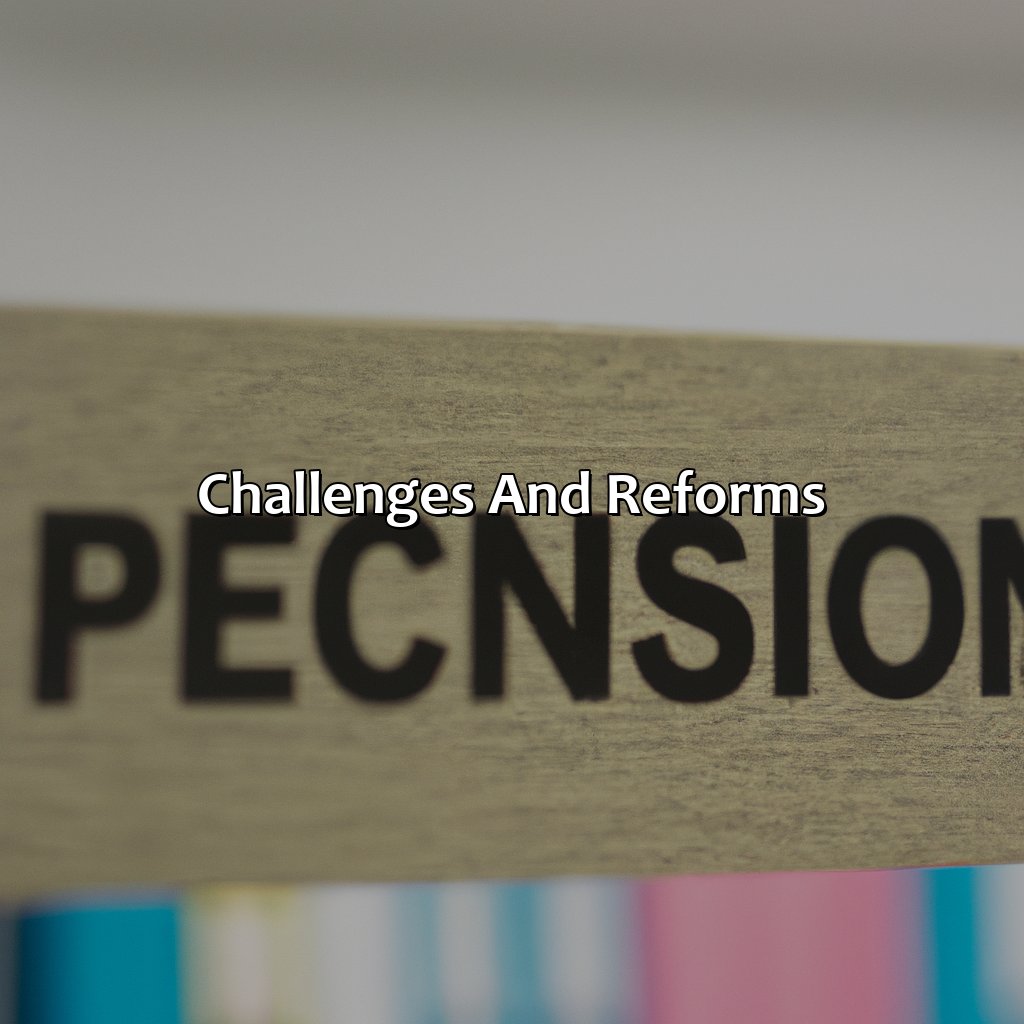
Image credits: retiregenz.com by Yuval Duncun
Sustainability of Public Pension
Maintaining the economic viability of public pension policies is crucial for long-term benefits. With rising life expectancy and fewer contributors, pension systems require an innovative approach to ensure sustainability. In addition, appropriate funding mechanisms need implementation to adjust ageing societies’ pension needs with inflation. Pension reforms such as increasing contributions, reforming retirement ages, expanding social protection coverage through private sector arrangements may increase sustainability without imposing unacceptable burdens on the economy. Finally, adopting the latest technological advances can help provide seamless financial inclusion for vulnerable people.
Reforming public pension is like trying to teach an old dog new tricks, except in this case the old dog is a bureaucratic system that’s been around longer than any of us.
Reforms in Public Pension
The overhaul of the public retirement savings program is one of the most pressing issues facing governments worldwide. The need for meaningful reforms to the government’s pension system has taken center stage as countries’ populations age. A shift from pay-as-you-go to fully funded programs with diversified investments, among other measures, will help ensure the sustainability and affordability of future public pensions.
The focus should be on automatic-enrollment schemes and increasing the retirement age to reflect demographic trends. Additionally, linking benefits to inflation is desirable because it ensures that beneficiaries’ purchasing power doesn’t erode over time. Furthermore, a move to more personalized programming, which allows individuals greater choice in selecting investment options, could also boost trust levels and participation rates.
For governments struggling with budget deficits or unfavorable demographics, sustainable pension plans can relieve some financial pressure and provide for social stability in their populations. In many nations worldwide from Belgium and Italy to Japan and Korea, this remains an ongoing issue that policymakers must address urgently. Who manages pension funds and ensures their sustainability is a crucial question that needs to be answered.
During the years following WWII, vast numbers of people joined employment-based pensions thanks to collective bargaining. By 1960 approximatively half of American workers were covered by traditional pensions with companies such as IBM pioneering innovative fixed-benefit models that became popular throughout the subsequent decade before declining in their reach by 2000 as employers turned towards novel tax-deferred contributions.
Looks like we’re gonna need a pension to support us through the future apocalypse.
Future of Public Pension
Grasp the future of public pension plans! What are the trends? Digest our conclusion and solutions, quickly!
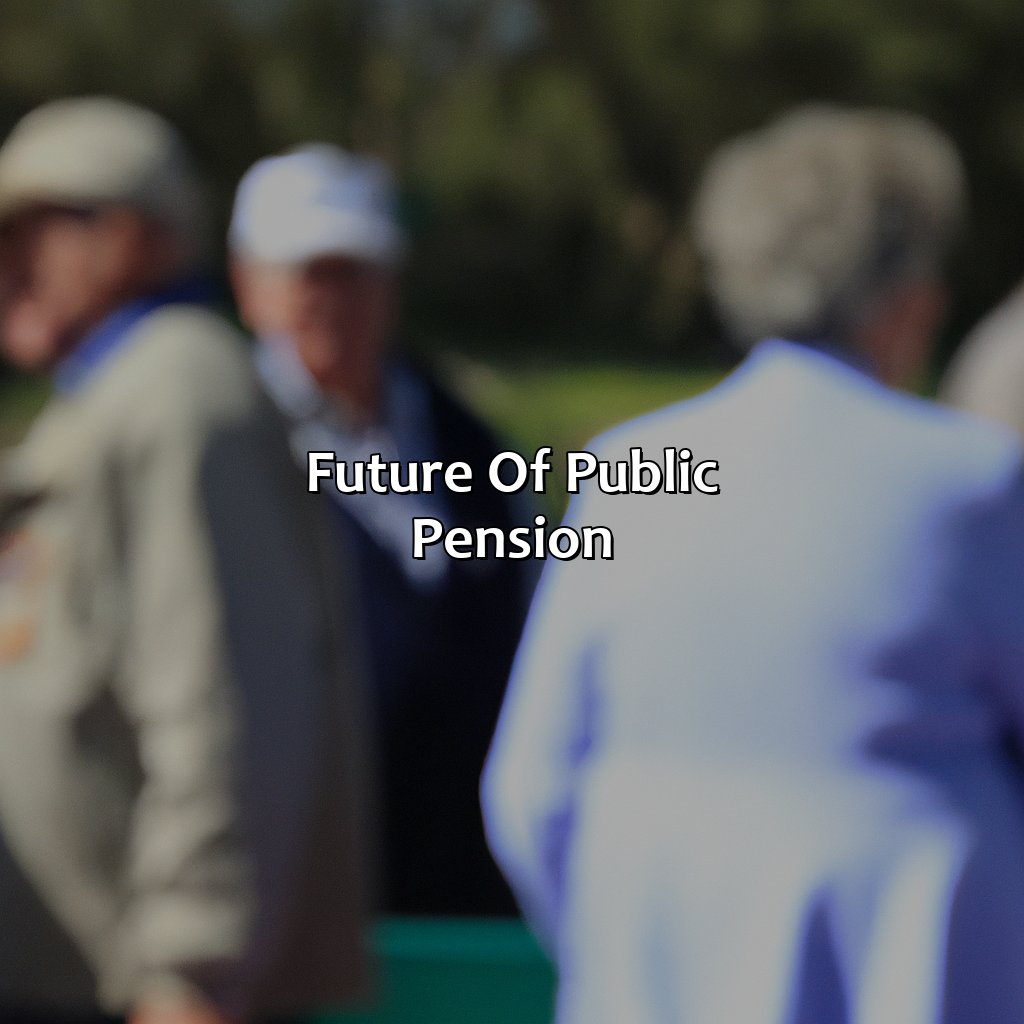
Image credits: retiregenz.com by Joel Arnold
Trends in Public Pension
The evolution of Pension schemes within the public sector has brought about a shift in trends that need to be evaluated. The changes, which have been observed over time, impact the investment options and overall retirement benefits for public employees.
The current phase of public pension schemes is experiencing changes in government regulations and the way funds are managed. These reforms aim to improve sustainability, cost-effectiveness and enhance employee engagement. The adoption of digital technologies has also been a key trend, enabling automation of processes as well as providing better transparency and access to information.
Moreover, shifts towards hybrid retirement plans that combine defined benefit and defined contribution elements have been observed. This approach provides flexibility to both employees and employers while moderating costs.
Public pensions require continuous attention as they impact the well-being of present-day workers, retirees as well as generations to come. Missing out on these changes can cause huge financial setbacks leading not just to personal problems but also affecting the status of nations’ economic stability. It is important for policymakers, employers and employees alike to remain updated on these trends and take appropriate actions that secure their future benefits.
Conclusion
Public pension schemes are important for ensuring the financial security of retired public-sector workers. These schemes are funded by contributions from both employees and employers, as well as investments made by pension funds. However, as life expectancy continues to increase and the number of retirees rises, there are concerns about the sustainability of these schemes. To address this issue, policymakers must consider various options such as increasing the retirement age or implementing new funding mechanisms. Ultimately, finding a solution that balances fiscal responsibility with providing adequate retirement benefits is crucial for securing the future of public pensions.
It is worth noting that while public pension schemes can provide financial security for retired workers, they do not always guarantee full support. A study conducted by the National Institute on Retirement Security found that many retirees face significant income gaps in their retirement years. This highlights the need for further policy changes to ensure that public pensions are able to adequately support retirees throughout their golden years.
One example of successful reform is Sweden’s pension system, which was overhauled in 1999 to transition from a pay-as-you-go system to a funded system based on individual accounts. This reform has resulted in improved sustainability and fairness in the Swedish pension system.
According to a report by PlanSponsor magazine, 59% of state and local governments with defined benefit plans have increased employee contribution rates since 2010. This shows a willingness among policymakers to take action towards ensuring long-term sustainability of public pension systems. If you are curious about how a pension fund works, it’s important to understand how contributions, investments, and payouts are managed for participants.
Five Facts About Public Pension:
Public pension is a retirement plan provided by governments and state institutions to their employees. (Source: Investopedia)
Public pension plans are typically funded by a combination of employee and employer contributions, as well as investment returns on plan assets. (Source: National Conference of State Legislatures)
There are two types of public pension plans: defined benefit plans and defined contribution plans. (Source: U.S. Department of Labor)
Public pension plans have faced funding challenges in recent years due to factors such as aging populations and investment losses during economic downturns. (Source: Pew Charitable Trusts)
Changes to public pension plans, including benefit cuts and increased employee contributions, have been proposed and implemented in some states and municipalities to address funding shortfalls. (Source: Brookings Institution)
FAQs about What Is Public Pension?
What is public pension?
Public pension is a retirement benefit program that is sponsored by a government entity, such as a federal, state, or local government. It provides retirement income to eligible public employees who have dedicated a significant part of their career to serving the public.
Who is eligible for public pension?
Eligibility for public pension varies depending on the specific program and the government entity that sponsors it. In general, public pension is available to public employees who have worked for the government for a certain number of years and have reached a certain age.
How is the value of public pension calculated?
The value of public pension is typically calculated based on the employee’s years of service, salary history, and other factors that depend on the specific program. In many cases, the pension benefit is a defined benefit, which means that the employee is guaranteed a certain level of retirement income.
Is public pension guaranteed?
Public pension is generally considered to be a secure form of retirement income, as it is sponsored by a government entity and is often backed by the full faith and credit of the government. However, there have been instances where public pension programs have faced financial difficulties.
Can public pension be transferred or rolled over?
In general, public pension cannot be transferred or rolled over to another retirement account, such as an individual retirement account (IRA) or a 401(k) plan. However, some programs may offer the option to withdraw a lump sum payment instead of taking the traditional pension benefit.
What are some common issues with public pension?
Common issues with public pension include underfunding, formula inconsistencies, investment losses, and legal disputes. These issues can lead to financial instability for both the public pension program and the retired employees who rely on the pension benefits for their retirement income.
 Checkout this IRS Loophole
Checkout this IRS Loophole 
